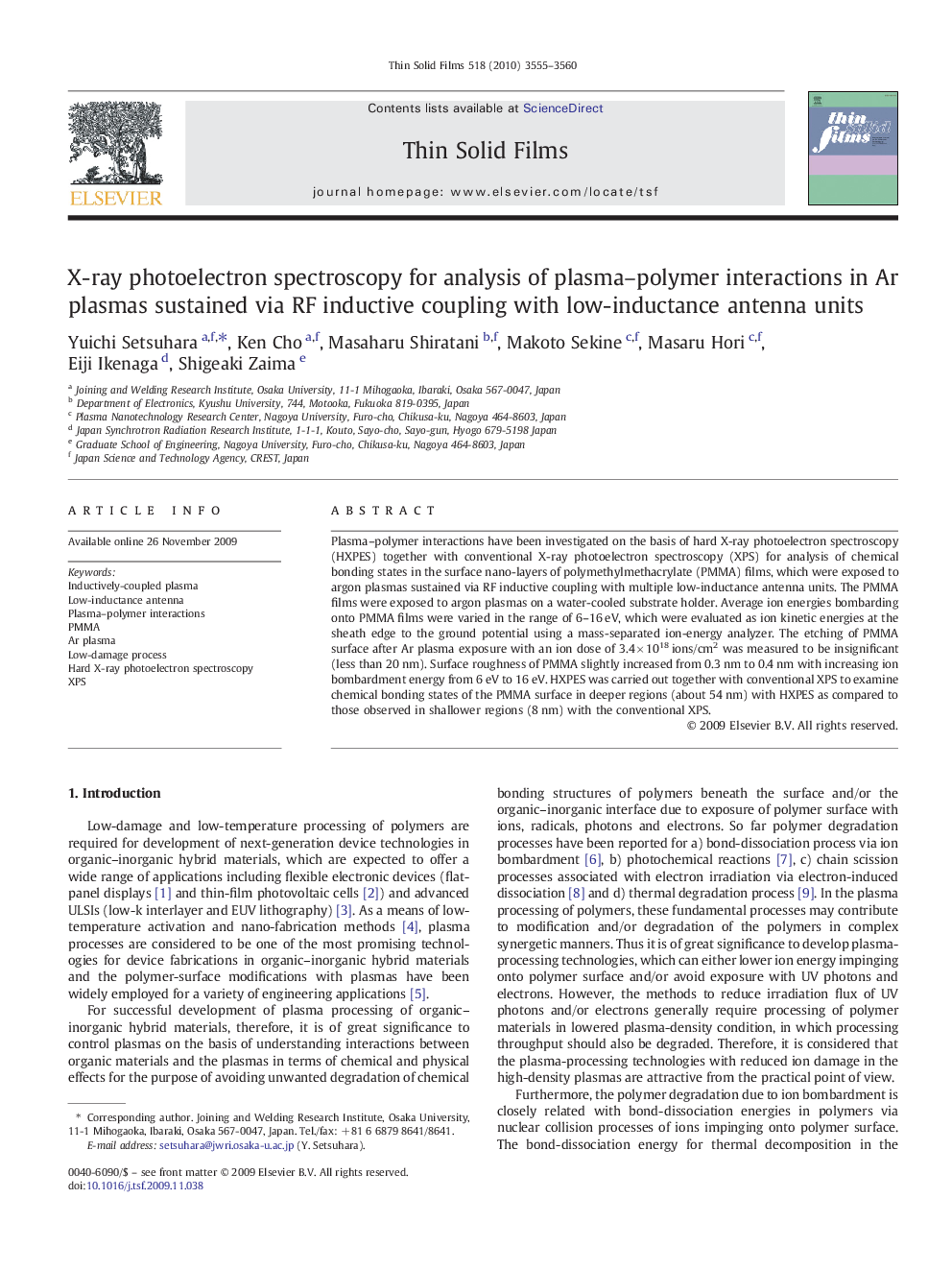| Article ID | Journal | Published Year | Pages | File Type |
|---|---|---|---|---|
| 1670838 | Thin Solid Films | 2010 | 6 Pages |
Plasma–polymer interactions have been investigated on the basis of hard X-ray photoelectron spectroscopy (HXPES) together with conventional X-ray photoelectron spectroscopy (XPS) for analysis of chemical bonding states in the surface nano-layers of polymethylmethacrylate (PMMA) films, which were exposed to argon plasmas sustained via RF inductive coupling with multiple low-inductance antenna units. The PMMA films were exposed to argon plasmas on a water-cooled substrate holder. Average ion energies bombarding onto PMMA films were varied in the range of 6–16 eV, which were evaluated as ion kinetic energies at the sheath edge to the ground potential using a mass-separated ion-energy analyzer. The etching of PMMA surface after Ar plasma exposure with an ion dose of 3.4 × 1018 ions/cm2 was measured to be insignificant (less than 20 nm). Surface roughness of PMMA slightly increased from 0.3 nm to 0.4 nm with increasing ion bombardment energy from 6 eV to 16 eV. HXPES was carried out together with conventional XPS to examine chemical bonding states of the PMMA surface in deeper regions (about 54 nm) with HXPES as compared to those observed in shallower regions (8 nm) with the conventional XPS.
